Also read Benny Goodman’s Kingdom of Swing, Part 1 of 2
Combos, Maturity and Legacy
In the late 1930s the innovative Swing combos of Benny Goodman http://www.jazzhotbigstep.com/45801.html (1909-1986) shaped a new small-band Jazz format. His trios, quartets and sextets introduced sophisticated combo jazz to a broad popular audience. Goodman did for clarinet what Louis Armstrong had done for the trumpet by giving it a newly assertive leadership role in the jazz ensemble. The achievements of his small bands alone would have been sufficient to mark Goodman for greatness.
Benny Goodman and his Orchestra were the most popular dance band of the Swing era. He made about 5,000 commercial recordings that were definitive statements of American popular culture, selling more than 100 million records during a career lasting into the early 1970s. This article and audio clips are based on the award-winning four-part radio program, Benny Goodman’s Kingdom of Swing.
Clip – From Yale Library Collection
Clip – Live Medley 1959, 1937
Chamber Music Jazz
Benny Goodman’s trios, quartets and sextets — a format that he described as “just like chamber music” — created great excitement among jazz fans, critics and fellow musicians. Between 1935 and ‘39 he waxed about fifty small band records, some selling up to 50,000 copies.
The combos emerged from his desire to explore new artistic challenges, prompted by his encounters with extraordinary soloists; initially, pianist Teddy Wilson and drummer Gene Krupa in 1935. Vibraphonist Lionel Hampton was added in 1936 and guitarist Charlie Christian in August 1939.
These groups featured Goodman’s clarinet interacting intimately with equally skilled soloists. The combos succeeded in part because Goodman was capable of playing infinite fresh improvisations.
Benny’s trios, quartets and sextets proved the commercial and aesthetic viability of the format, inspiring other bandleaders to organize small ensembles. By the late 1930s Goodman’s innovative ‘chamber jazz’ was widely imitated, with combos spinning off from the orchestras of Count Basie, Tommy Dorsey and Duke Ellington.
Clip – Introduction to BG Small Bands
Benny’s Trios and Quartets
Starting in 1935 Goodman presented trios, quartets and small ensembles of various sizes on record and in live performance which was among his best work. The combos began with his 1935 trio recordings with drummer Gene Krupa and pianist Teddy Wilson went on for decades with shifting personnel rosters.
A brilliant, highly skilled musician, Teddy Wilson (1912-1986) was formally trained in music theory. A perfect match for Goodman, Teddy’s right-hand keyboard runs followed the clarinet lines seamlessly with nearly telepathic rapport.
Drummer Gene Krupa (1909-1973) was part of the original Benny Goodman Trio. He shared those duties with some of the best drummers in Jazz as he developed a successful independent career becoming a big star and bandleader on his own. Yet, Krupa was the star soloist in 1937 on “Sing, Sing, Sing” — including a lengthy drum solo which was the first of its kind on record. It was also one of the Goodman Orchestra’s biggest hits. Though he left the orchestra to start his own band in 1938, Krupa performed sporadically with Goodman for decades.
In 1936 Goodman added Lionel Hampton (1908-2002), launching the Benny Goodman Quartet. An innovation in Jazz, Hampton’s vibraphone generated both percussive notes and sustained piano-like tones, a complementary blending with Teddy Wilson’s piano and Benny’s clarinet. Hamp was an extraordinary showman. Though he could play with restraint on velvety ballads, his bubbling solos and raucous call-and-response routines galvanized audiences.
The principal musicians of the original quartet all moved on to independent music careers and were replaced by a dazzling array of subsequent talent. But they always remained welcome guests.
Clip – BG Sextet Pt 1, Charlie Christian
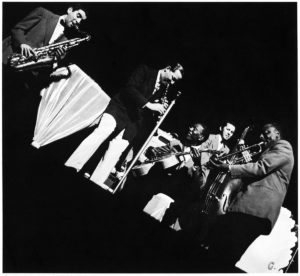
The Benny Goodman Sextet with Georgie Auld, Benny Goodman, Charlie Christian, Artie Bernstein and Cootie Williams.
Charlie Christian and the Goodman Sextets
Goodman hired amplified guitar player Charlie Christian (1916-1942) after a single late-night jam session. With the addition of Christian, the Benny Goodman Sextet was created. The guitar player’s sound was something entirely new and quite different. A brilliant improviser, he presented a bell-like tone, adventurous chording and confident angular lines that echoed saxophonist Lester Young.
Upon first hearing a melody and chord structure, Christian was instantly ready to play horn-like solos indefinitely. He rejected the previous conventions generally limiting the guitar to supplying chords and rhythm – certainly on records. An unschooled but gifted musician, Christian was a dynamic innovator. He likely chose the newly available amplified guitar in order to play powerful single-note melody lines and hold his own with the horns.
Sadly, just as his star was rising, Charlie developed advanced tuberculosis. Coupled with his unhealthy lifestyle (drinking, partying and worse) the disease killed him at age 25. To his credit, Goodman quietly paid Christian’s medical bills.
Charlie Christian was one of the best-known performers who played amplified guitar in a purely Jazz context. Down Beat Magazine readers voted him best guitarist three consecutive years in the polls of 1940, ’41 and ‘42. He was to have a huge impact on Benny Goodman, Jazz, Popular music and future generations of guitarists despite his premature passing.
Clip – BG Sextet Pt 2 – Christian, Lester Young, Buck Clayton
- (Page 1 of 2)
- Next page →


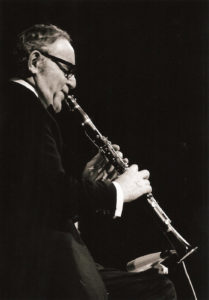
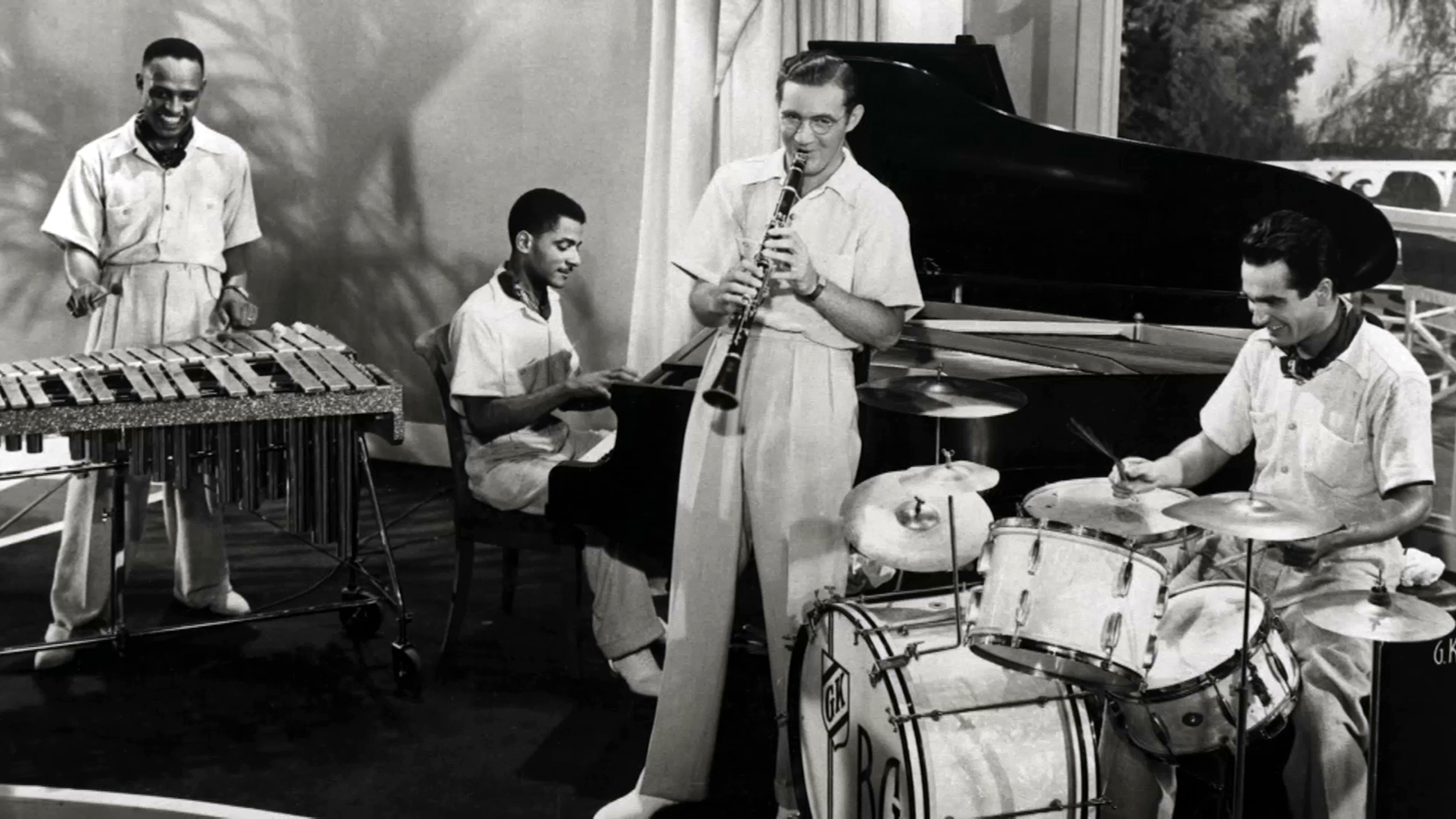
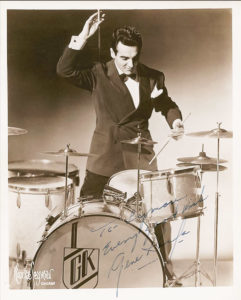
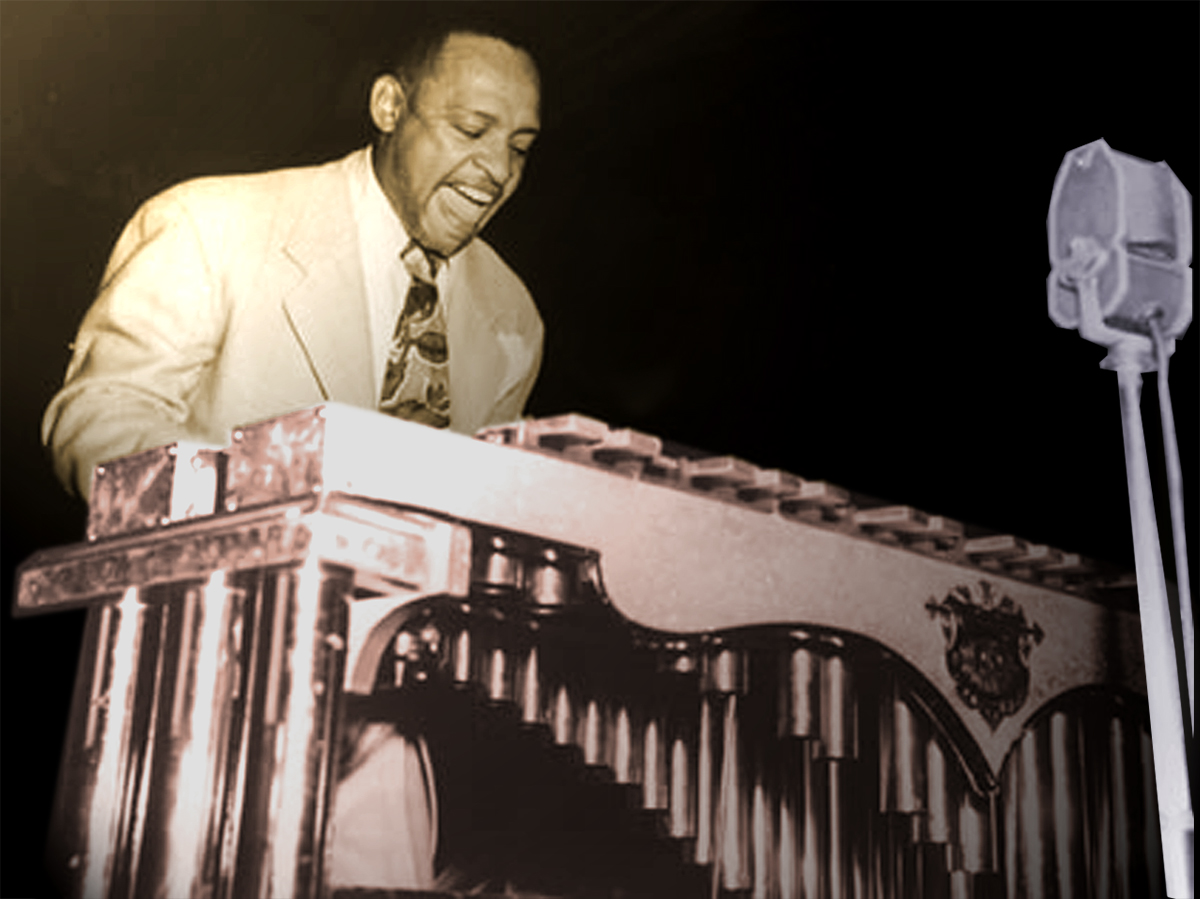

Thanks so much for these columns. Great background material on one of jazz’s greatest artists. I think his recording of Sing!Sing!Sing! featuring Harry James and Gene Krupa is the best rockandroll recording ever made.